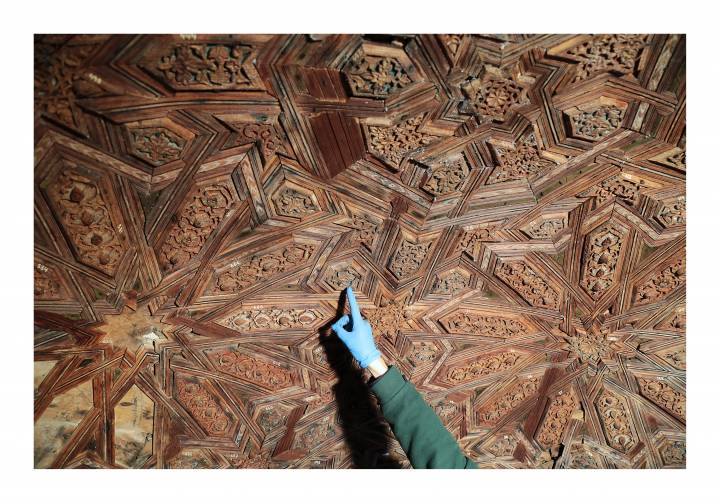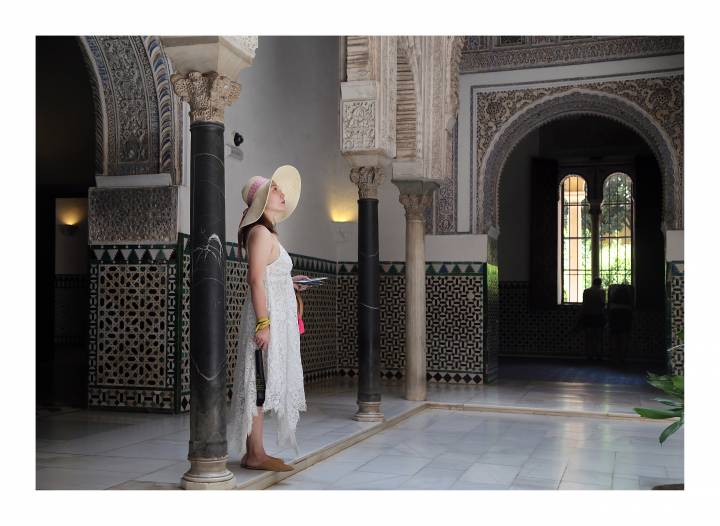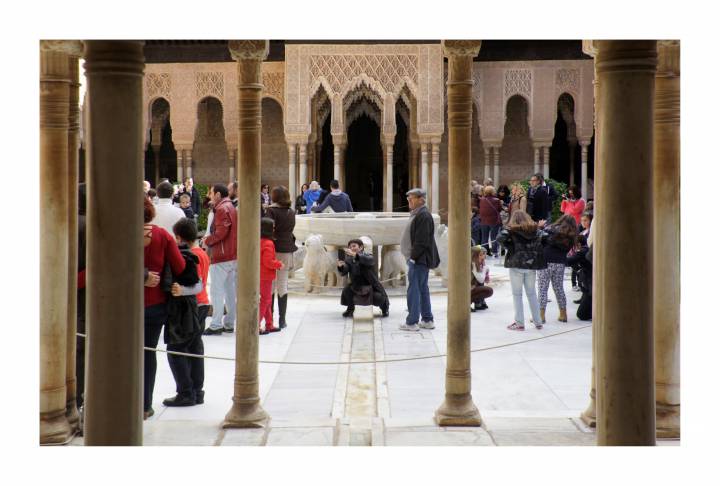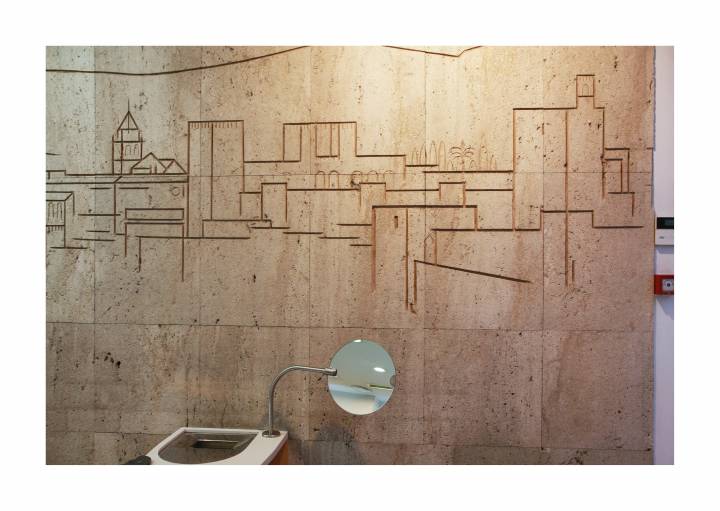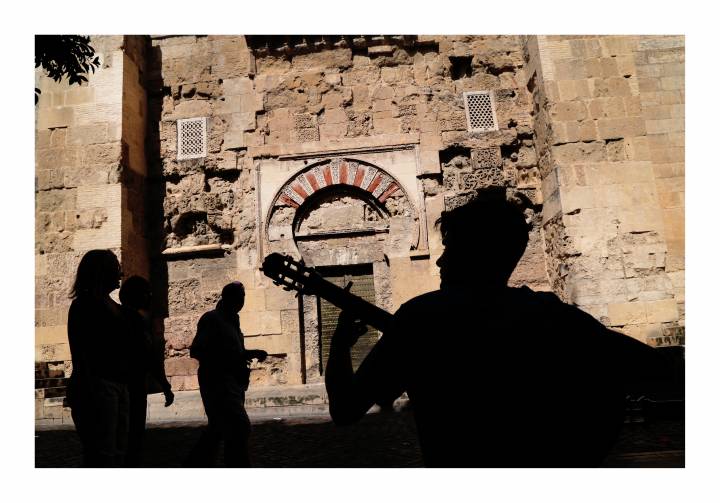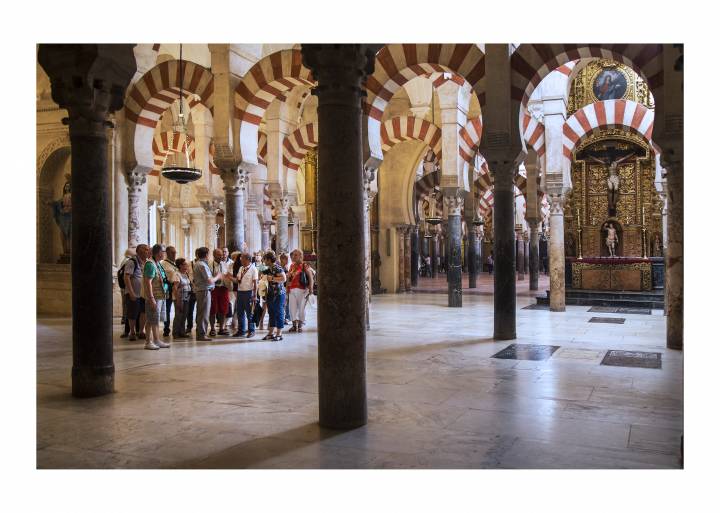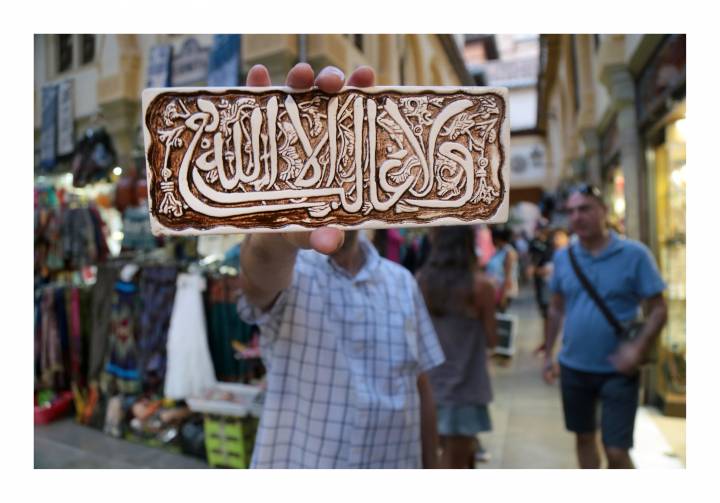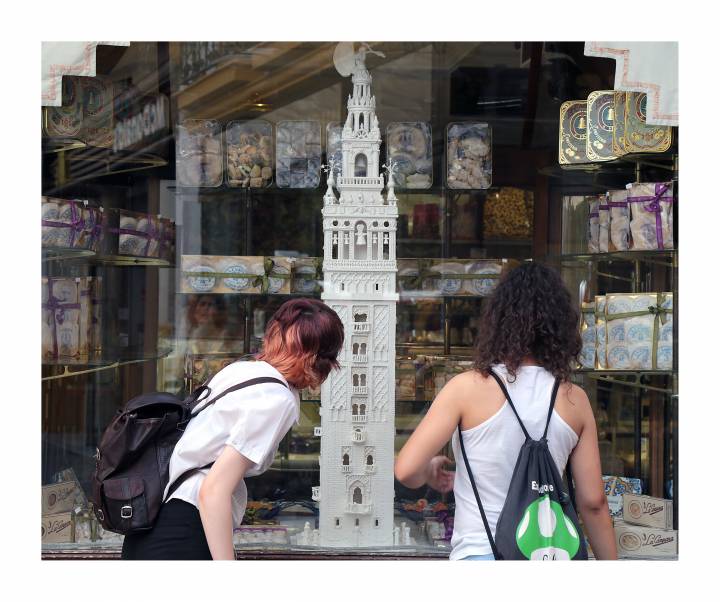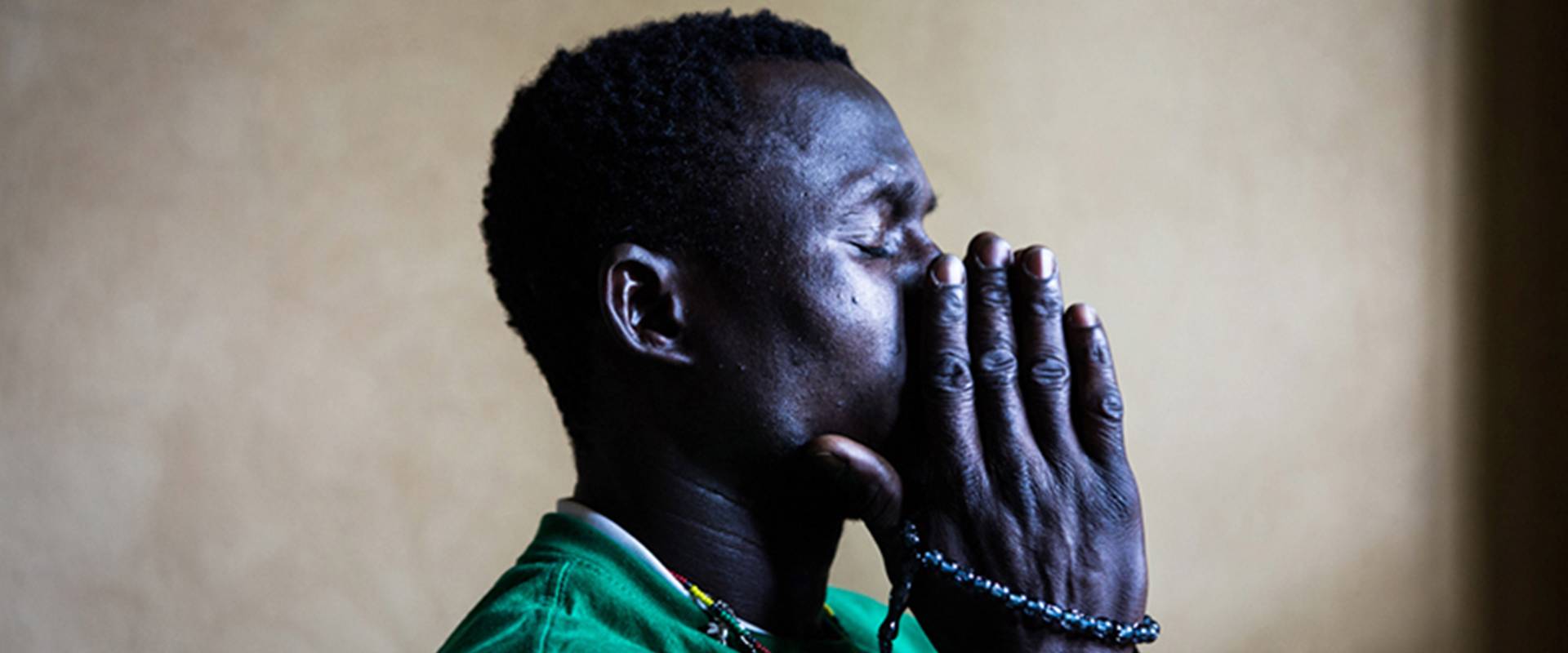Many people from Granada exhibit reproductions / replicas of the Alhambra in their business or in their own home. They show proudly - in photos, paintings or murals - a monument erected centuries ago by a culture that, in its current version, most of them either ignores or repudiates. Although still little studied, it is a proven fact that Islamophobia is growing day by day in Western societies. We direct our rejection towards a religion - and therefore towards its practitioners – which only seems to exist in its most radical and dangerous version.
[Political and geostrategic interests designates Islam as the great enemy of the West, as a threat to the values of freedom, peaceful coexistence and democracy that fly, like an almost exclusive flag, in Europe and the United States.]
At the same time, in countries like Spain, we do not hesitate to take advantage of the mercantilist Islamic symbols inherited, a heritage that we have appropriated as a tourist attraction, as a fabulous hook for our cultural industry.
Another clear example is the Mezquita de Córdoba which, together with the Alhambra, is one of the most visited monuments in the world. Converted into a cathedral today, it is forbidden to pray to muslim visitors, whose obligation - for religious reasons - is to pray in any temple with Mihrab, an Islamic element that still retains this building, which, however, has now consecrated itself to Christian worship. Curiously, in the past this site was shared by Christians and Muslims for a time, being able to be considered a space of encounter and affirmation of the two cultures.
This report aims to analyze the relationships between tourism exploitation of these spaces, the current functionality that is granted in contrast to their original use and meaning, as well as the fascination they cause in the thousands of tourists who arrive in a year, attracted by an Orientalism nostalgic of past times, wrapped in a kind of romantic dreaminess that has little to do with prejudices and fear of Islam that extends to the times.
The Islamic Culture praised for its legacy, for that past evoked in the style of "Arabian Nights" and, however, questioned in the present by the same citizens who occupy their heritage as if it were a theme park. It is used by those who value the continent above the content and who even promote the declaration of these architectural gems as a World Heritage Site to convert them into an economic engine that justifies any symbolic conquest.

